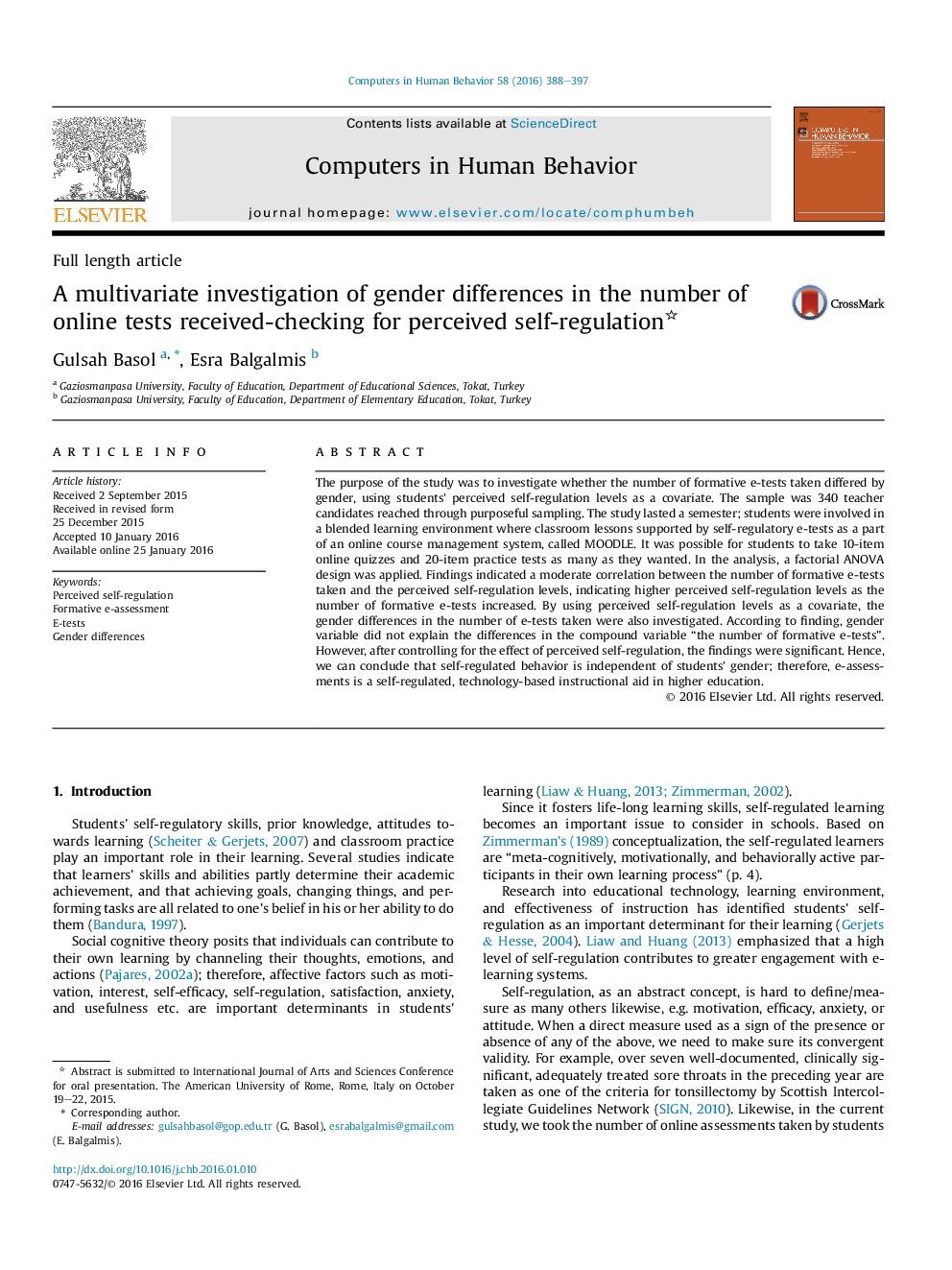| Article ID | Journal | Published Year | Pages | File Type |
|---|---|---|---|---|
| 6837587 | Computers in Human Behavior | 2016 | 10 Pages |
Abstract
The purpose of the study was to investigate whether the number of formative e-tests taken differed by gender, using students' perceived self-regulation levels as a covariate. The sample was 340 teacher candidates reached through purposeful sampling. The study lasted a semester; students were involved in a blended learning environment where classroom lessons supported by self-regulatory e-tests as a part of an online course management system, called MOODLE. It was possible for students to take 10-item online quizzes and 20-item practice tests as many as they wanted. In the analysis, a factorial ANOVA design was applied. Findings indicated a moderate correlation between the number of formative e-tests taken and the perceived self-regulation levels, indicating higher perceived self-regulation levels as the number of formative e-tests increased. By using perceived self-regulation levels as a covariate, the gender differences in the number of e-tests taken were also investigated. According to finding, gender variable did not explain the differences in the compound variable “the number of formative e-tests”. However, after controlling for the effect of perceived self-regulation, the findings were significant. Hence, we can conclude that self-regulated behavior is independent of students' gender; therefore, e-assessments is a self-regulated, technology-based instructional aid in higher education.
Keywords
Related Topics
Physical Sciences and Engineering
Computer Science
Computer Science Applications
Authors
Gulsah Basol, Esra Balgalmis,
